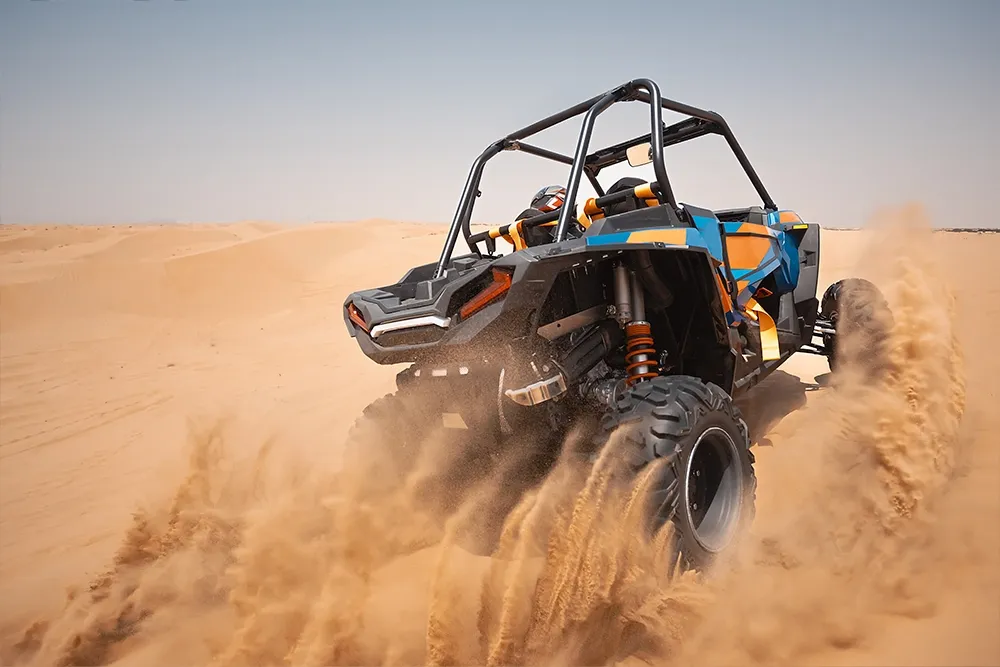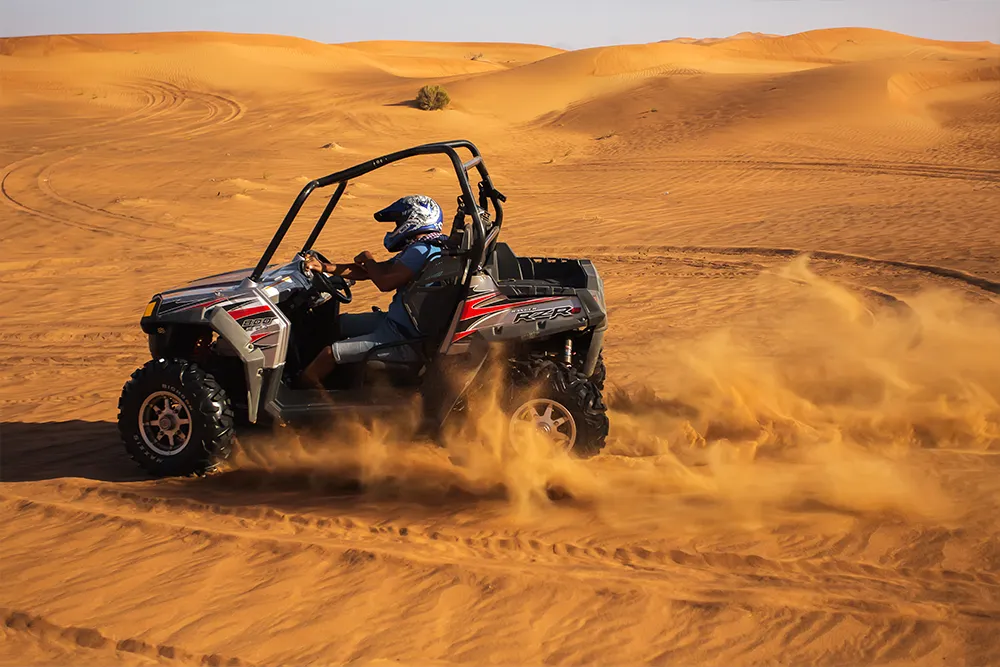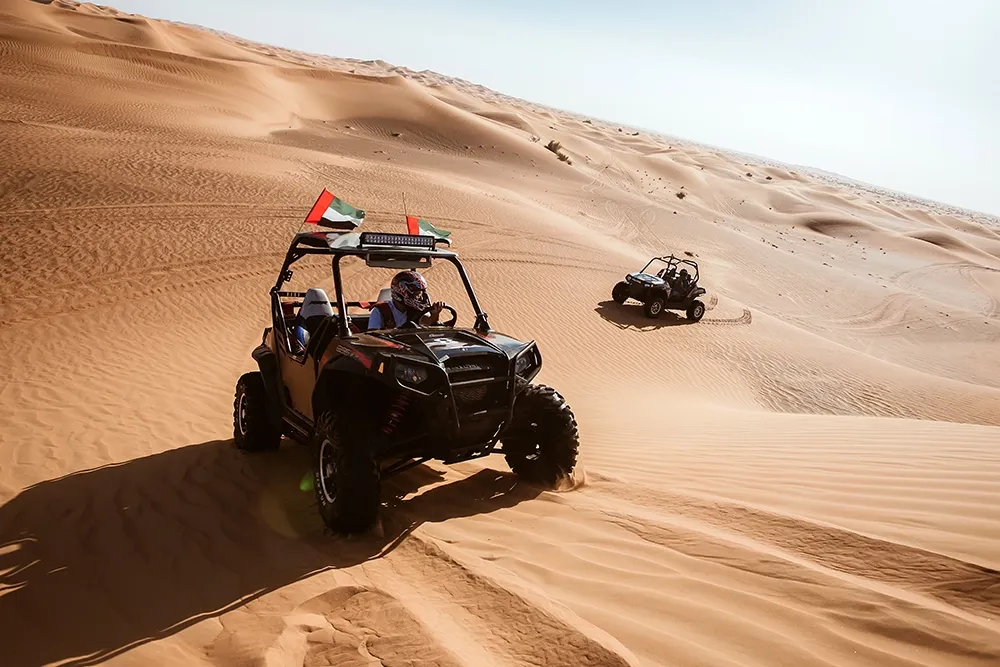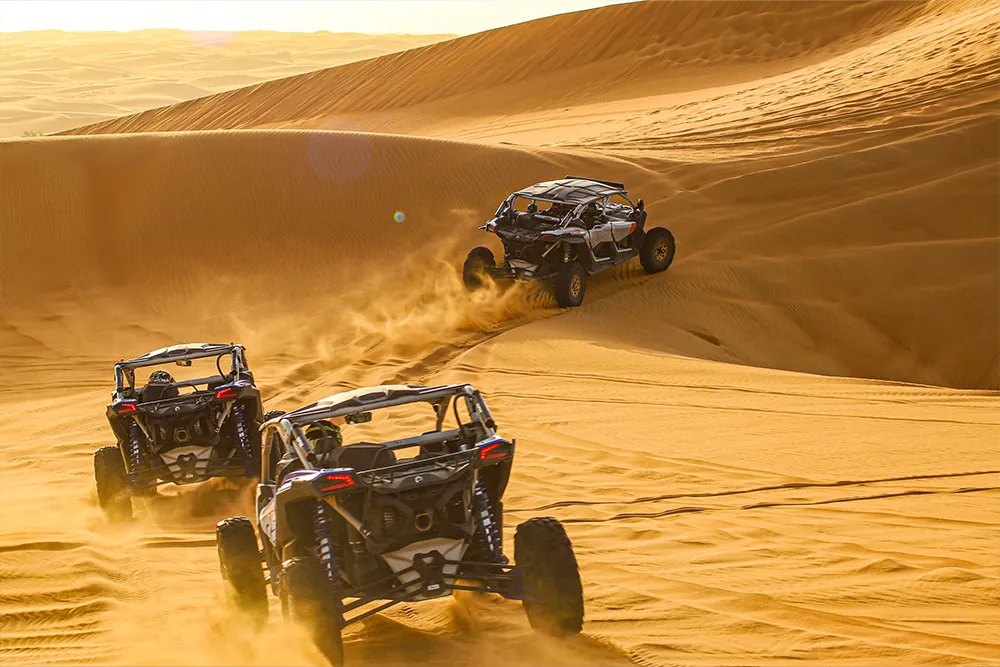Sand stranding is a fate to which even the best of off-road drivers can fall victim. But with preparation, the proper tools, and technique, you'll have them back walking on solid ground before you can even say it. This guide demonstrates how to retrieve a buggy from sand step by step, from deflating tyres and employing traction aids, to digging, winching, or towing out, basically all you need to know about buggy recovery tips, and we will also demonstrate how Beno can assist your off-road adventure.
Whether it is learning the best tips for getting a buggy out of sand or simply enjoying the ride, preparation and support are your greatest allies in the dunes. So let's take a look.
Why Sand Stalling Happens
Sand is an unfriendly medium: it is slippery, formed, and there is minimal surface grip. Even seasoned drivers will be stuck when driving without speed control, or when the bottom of the vehicle is on the ground. The first thing to do is recognise that getting stuck is failure and not the end, but an obstacle to be overcome.
To dig out, you shouldn't go bonkers, get your bearings, dispatch equipment responsibly, and try to calm your nerves. Crazy wheel spinning or engine revving will only spin wheels deeper into. The right mindset and smart, along with these buggy recovery tips, can make all the difference between panic and progress.
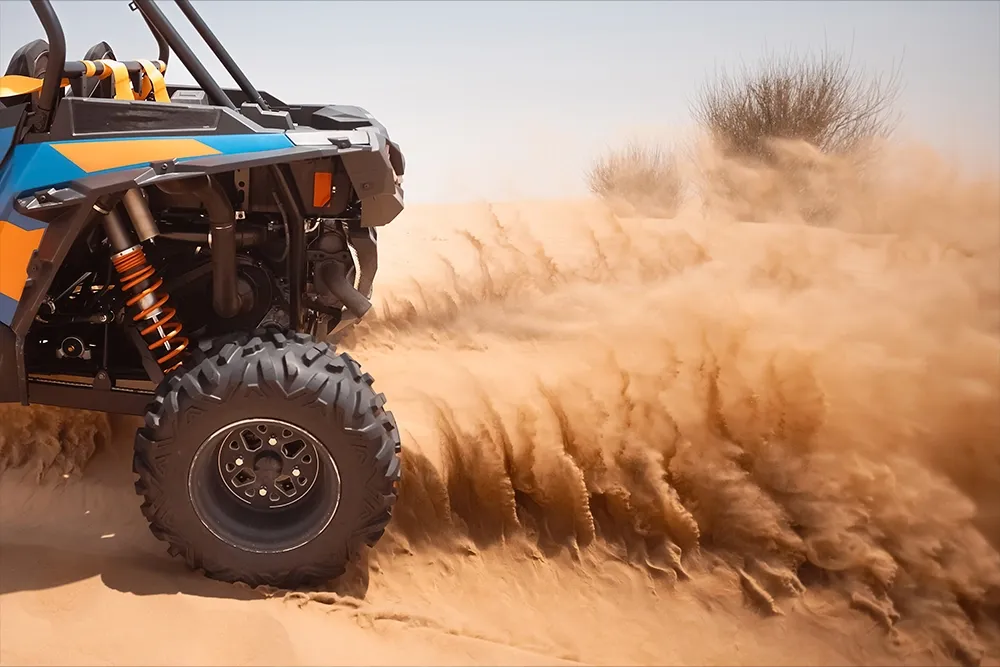
Gadgets You Should Take with Your Buggy
When you drive onto the sand dunes, outfit your vehicle with equipment that will take you out hours (or worst of all, towing charges)
- Shovel / folding sand shovel — to dig beneath concealed tires
- Traction mats / recovery boards — to provide a hard surface for tires to grip onto
- Tow straps / recovery rope — for tow recovery from another vehicle
- Tire pressure gauge / deflator — to deflate tire pressure
- Snatch straps, shackles — for off-road recovery operation
- A winch (if one is available) — handy for solo recovery in the backcountry
- Hand tools and gloves — to maintain your grip, dig, and clear your path
These are your best first line of defense to self-extract from the buggy, so do memorise the above Dubai off-road buggy tips checklist, before you embark on your adventure.
Step-by-Step Recovery Procedures
Apply these procedures step by step; if one fails, apply the next.
1. Identify the Situation
Exit the vehicle (cautiously) and observe:
- How far the tires are in
- Which tires (front or back) are in
- Whether belly or chassis is on the ground
- Sand around firmness
- It accomplishes this by allowing you to choose your method without mess.
2. Drain Air from Tires
Reducing tire pressure raises contact patch (flotation), which will keep your tires on loose sand longer. Most buggy recovery tips guides suggest dropping to around 12–15 psi depending upon your vehicle and tire size. Also, remember to refill after recovery prior to driving on harder surfaces or pavement.
3. Dig/Clear Sand Behind Tires
Dig sand in front of and behind stuck tires with a shovel (or both your two hands in a pinch). Dig sand beneath the skid-bottom of the vehicle or extending barriers along that edge forward travel. Cut a packed-sand groove in the direction of travel.
4. Use Traction Mats or Recovery Boards
If they are immobile, place your mats or boards under your drive wheels. The mats give your tires something solid to thrust against instead of sinking into loose sand. Slowing and maintaining throttle constant so wheels roll over boards and won't spin.
5. Rock the Vehicle Gently
Back away slowly with light throttle to "learn to rock" the buggy. Gently compresses the sand and gives momentum to push through. Handle lightly; heavy rocking or jerking can cause increased sink.
6. Winch or Tow Recovery
And if all else fail:
If your buggy does have a winch, locate a suitable anchor point (other vehicle, buried anchor, rock) and winch slowly. When using natural anchors to anchor, use a tree saver strap.
If you do get to use another vehicle, tow straps only to the proper recovery points (not suspension, not bumpers). Pull in a straight line and maintain contact.
7. Sand Anchors (Solo Recovery)
If there are no natural anchor points on open dunes, you can install a sand anchor or even your spare tire as a winch point. Stamp down the sand hard, drive in your cable, and back out your buggy slowly.
Some More Safety & Buggy Recovery Tips
- Don't try spinning wheels using brute strength; it just digs you deeper.
- Glove up when buckling on, boarding, or winch cable.
- Speak clearly to your assistants; don't have tight straps or cables.
- Buckle rescue equipment never onto weak or unbolted attachment points on the vehicle.
- Inflate tires prior to crossing hard surfaces.
- Bring extra water and shade equipment; being stranded in sand under the sun can be deadly.
- Practice them in shallow, protected conditions so that when actual trouble arrives, you'll be prepared.
These safety tips for buggy sand recovery can turn what feels like a stressful experience into a lesson in control, patience, and preparation.
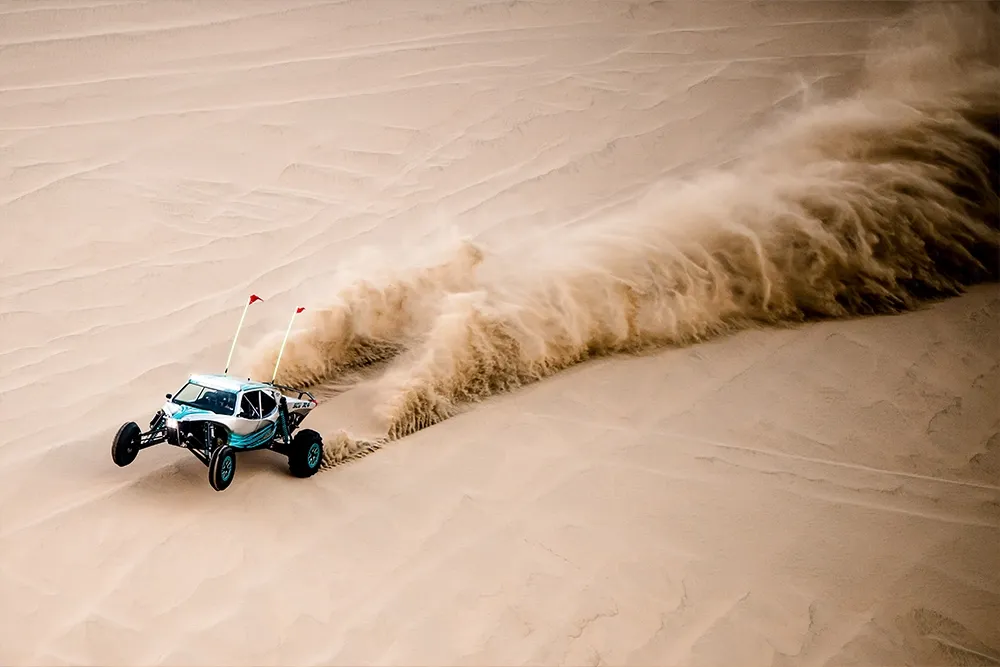
Why BENO Makes a Difference
Stalling will just be the reality of off-road life, regardless of how much you'd prefer otherwise. That doesn't have to ruin your day, though. Beno provides you with professionals for your ride, rescue pick-up, back-up vehicles, or arrangement of neighborhood recovery operators.
When you reserve a desert buggy rental tour with Beno, support never lags and, apart from that, Beno's fleet receives good maintenance and service, and our guides are pretty much acquainted with the back of their hand acquainted with the country, so this can limit your opportunity to be left vulnerable in the first instance.
Sand-stranded? Preparation, level heads, and buggy recovery tips are the answer. Provided you've got the right equipment, shovel, traction mats, winch, tow straps and technique such as deflation of tires, gradual digging, and long pull, you'll dig your buggy out of the sand nine times out of ten.
And if you are with Beno, you've got a back-up factor that keeps your desert ride on track, so just sit back and enjoy!
FAQs
- What’s the ideal tyre pressure for driving or recovering on sand?
12–15 psi is ideal recommended in books, though values vary with tire and load.
- Single-handedly, can I recover my buggy?
Yes, with kits such as a winch, sand anchors, or recovery boards, single-hand recovery can be done. But with assistance or with a partner, risk is completely eliminated.
- At what point I use a winch instead of a tow strap?
It is preferable to employ the winch if there is a firm anchor or not another car available to be pulled from somewhere. Employ a tow strap if you have another safe-capable car to pull you from behind (park the two vehicles side by side and keep open communication).
- How to never get stuck again next time?
Initially, foot-scout dunes shun sharp crests carefully, stay momentumed, travel flat not sharp angles, and early morning hours when sand is hard.
